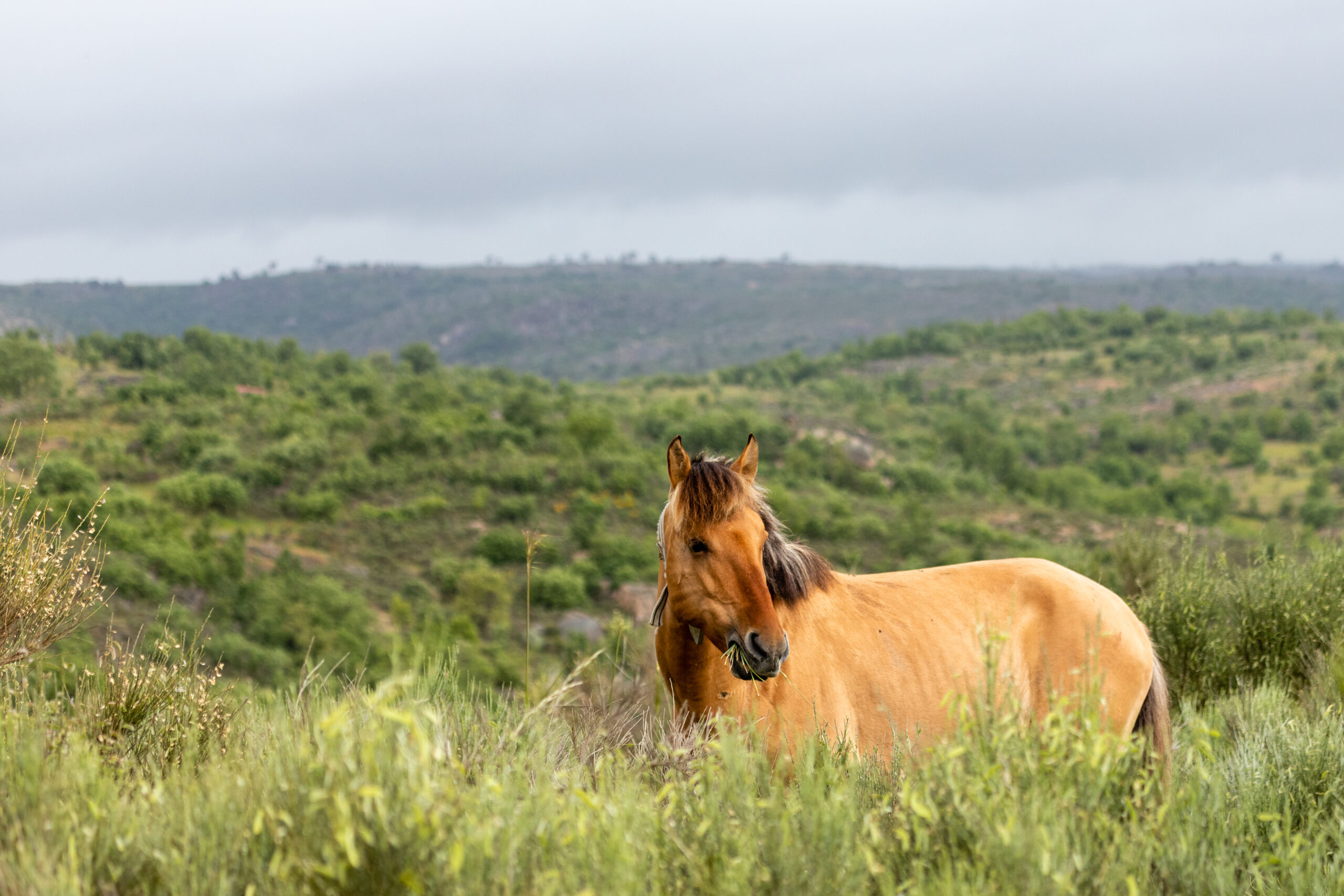The Sorraia horses that now live in Vale Carapito and Ermo das Águias and that will soon also be introduced to other properties in the Greater Côa Valley rewilding area, have an important mission to fulfil that has been lost over the ages with the extinction of the large wild herbivores in the landscape.

The Sorraia horse, a native Portuguese breed, has a population of only about 200 individuals worldwide. For the same reason, the choice of the initial herds for Vale Carapito and Ermo das Águias also consisted in an effort and contribution to its conservation and valorisation.
Reminiscent of the wild ancestor of the Iberian horse, the Sorraia Horse has this name because it was a species recovered from a nucleus of animals that was found in the valley of the Sorraia River, in Coruche. They are short in stature (1.44 to 1.48m on average), with brown bay or mouse coats, with a mule stripe and greater or lesser evidence of zebras on the head and limbs. In the case of the herd now living in Vale Carapito, there are eight females and two males, five of which are already adults, while the rest are foals or juveniles. They are also different in terms of their coat, as two of them are brown bay, while the rest have mouse coats.

Sorraias are wild horses that are extremely resistant to environmental conditions, something they inherited from their primitive ancestors, whose function is intended to be recovered in the ecosystems. As herbivores, they play a key role, as they help shape the forest, maintaining pastures and open areas through natural grazing. They are also great allies to reduce the risk of forest and rural fires, one of the biggest threats to nature in Portugal that has worsened in recent years, precisely because of this regeneration of the landscape to which they contribute a lot.
The goal of these introductions is to use this species and its semi-wild functions as a large herbivore, as they are of enormous importance in the consumption and management of biomass, creating new mosaics in the vegetation.
